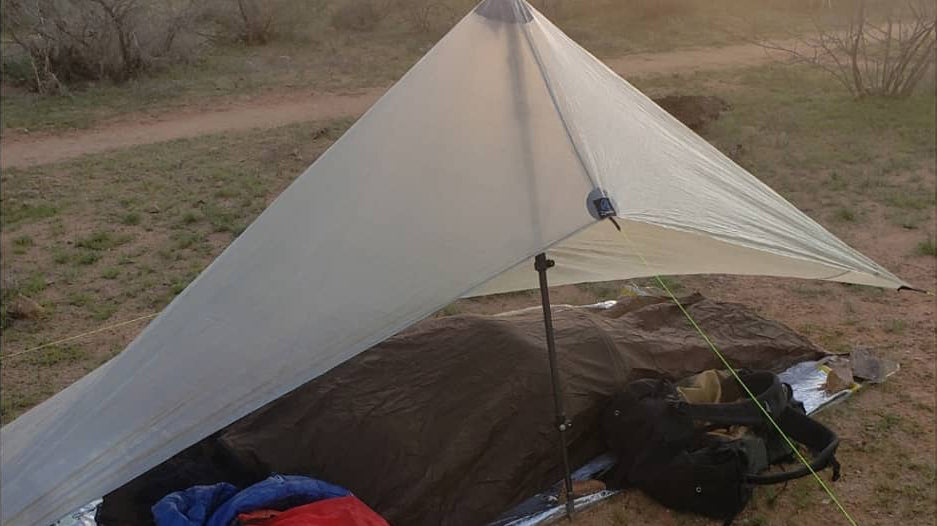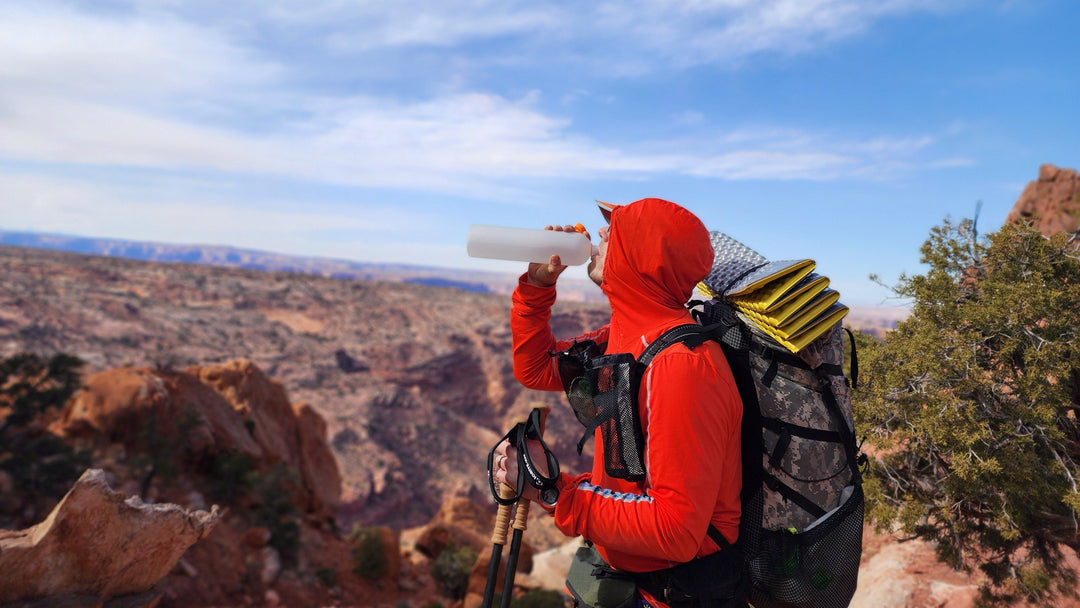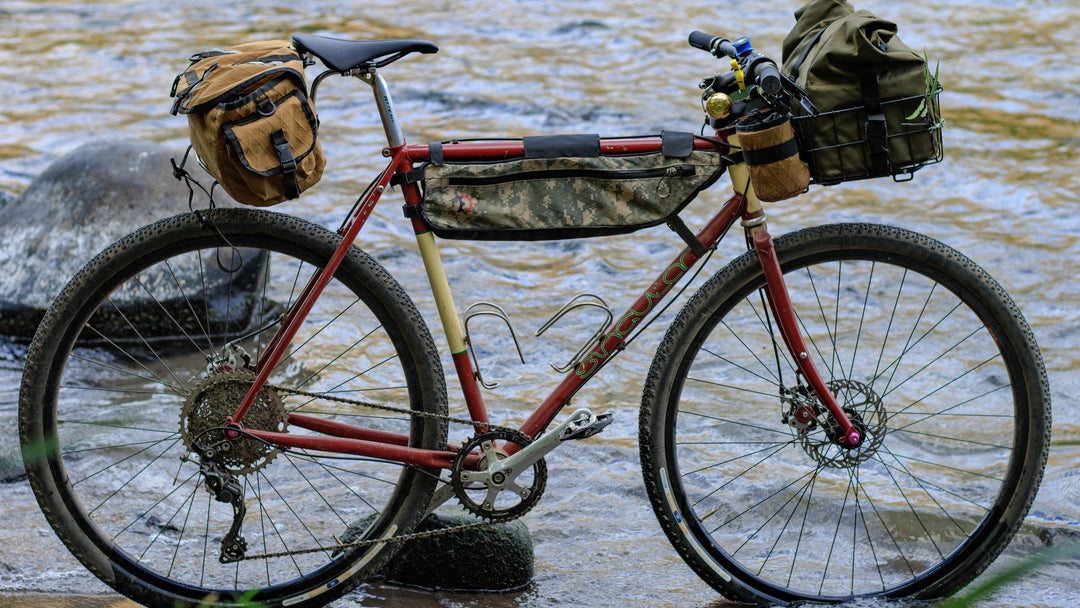Cnoc Telescopic Poles: Failure Testing To Get To The Best

This spring we sent Cnoc trekking pole prototypes out with some hikers that we knew would put them through very rough use. Along the way, they found some problems with our poles and we went into a problem-solving mode to get them into peak condition for our Kickstarter backers. One of our testers was Artemis who used our three-segment telescopic poles on the Arizona Trail, using the poles for climbs, fording, stability, descending steeply graded trail, and for pitching her tarp shelter. Here's what she had to say about the trail conditions.
Testing on the Arizona Trail
"The Arizona National Trail is approximately 800 miles of rugged terrain, beginning from the Mexico/U.S. border and running north to the Utah state line. I traversed several mountain ranges, canyons, high desert, and pine forest. Conditions were often diverse, and there was no shortage of snow in the elevations above 8000 feet. Right out of the gate, I was faced with heavy snowpack going over Miller Peak in the Huachuca Range, as well as descending through several feet of slushy snow coming down Mica Mountain in Saguaro National Park.
Near the end of my journey, there was around ten feet of snow on the North Rim of the Grand Canyon.
In the high desert, such as in the Gila River Valley and Superstition Mountains, it was rocky with fine grit sand making up the trail. The Mogollon Rim was mucky after heavy rainfall, with clay and volcanic pumice. On many occasions, I used the trekking poles for stability in the snow, mud, loose scree, and for crossing the abundant high-flowing creeks and rivers along the way."
 Photo by Steve Hulse
Photo by Steve Hulse
Poles Feedback
"I began having issues with one of the trekking poles once I entered Saguaro National Park, about one week after my start date. I had already come over the Huachuca Mountains and trekked through a stretch of low elevation desert near Tucson. I hit more snowpack near the peak of Mica Mountain, and on the descent, I had to constantly tighten the locking mechanism on the lower half of the trekking pole.
At one point, I lost my balance while route finding through some dense shrubs, and realized that the lower lock of the trekking pole was now gone altogether. I’m not entirely sure at which moment it had failed, but with the bushes pulling at me and my gear, and the amount of snow I was dealing with, it could have been a combination of the both that lead to it breaking. As it was late in the day and I was pressed for time to get out of the snow before dark, I didn’t backtrack to look for it.
Since the first trekking pole failure, I relied heavily on the still-functioning one to see me through the next several hundred miles until a new one arrived. It performed well up until the Gila River Valley, at which point the tip loosened and fell out. I hadn’t noticed this right away, but simply replaced it with the tip from the previously broken trekking pole."
The Problems (As We Understood Them)
Occasionally the EVA handles slipped: an adhesive with a grip design issue. A week into Artemis's hike, she found she had to frequently tighten the friction lock on the lower segment of the trekking pole while descending through snowpack on Mica Mountain. When she lost her balance in dense shrubs, the lower lock came off and disappeared. Her remaining trekking pole performed well until she got to the Gila River Valley, where the tip fell out. She replaced the missing tip with the tip from the pole missing the friction lock and continued. We were able to get her a replacement pole at her halfway point in Pine and had her send the failed pole back to us for study.
The Solutions
Artemis was using our 2nd generation prototypes (we are now on the 5th generation) and since her testing, we made some crucial updates:
- The grip issue was solved by finding a new grip factory that can make a one-piece, overmolded, grip which allows it to be more robust in every way.
- Working closely with 3M and their experimental lab (yes, we do experimental gear). We now use three different bonds to make our poles last and parts stay together. Also how we apply the bonds has changed, making the application more efficient and durable.
- Locks have been redesigned and are now made from two different materials, while we have a company working on creating new nuts for our poles to make sure they are perfectly sized and do not to get loose. The clamps also have a new layer of TPE, making them less likely to peel off and lose grip.
- The Easy Tip was doubled in size (both ways), making for a more secure hold in the carbon tube while providing for a better supporting part for the flimsy polypropylene housing of carbide tips. A new bond is now used that adheres the aluminum to the carbon tube.
Final Thoughts
Artemis concludes, "Both poles held up until the end of the trail and I was pleased with their performance. I enjoyed how lightweight they felt, and they seemed quite sturdy when I put all of my weight on them. The tips held up nicely too and didn’t show any significant wear after the harsh conditions they went through.
As an avid thru-hiker, I do have a high expectation for my gear and I do expect it to last. When an item fails, it’s extremely difficult to deal with gear companies in regards to replacements and warranties, as my time is spent all day for several days on end, and time in town is often limited. This is a frustration shared by all thru-hikers, so I recommend continuing to keep communication strong when hikers reach out to you about gear issues. I understand that thru-hiking is a niche sport, however, the community is growing and novice hikers often turn to us for gear reviews. In my opinion, you’re right on track to make a good product that could be long-lasting in tough conditions and enjoyed by all outdoors-people."
Working with Artemis and other hikers like her provides us with great insight that is sometimes missed, especially as we are the ones to develop the gear. Many times we get caught up with the concept and miss how it might behave in the real world when tested by hikers who don't know the optimal way to use our products. This allows us to improve, upgrade or completely cancel projects and products.
You help us make better gear and we hope you like it.
Planning on hiking the Arizona Trail? Check out Artemis's blog posts on budgeting and preparation, and her gear list.









Leave a comment